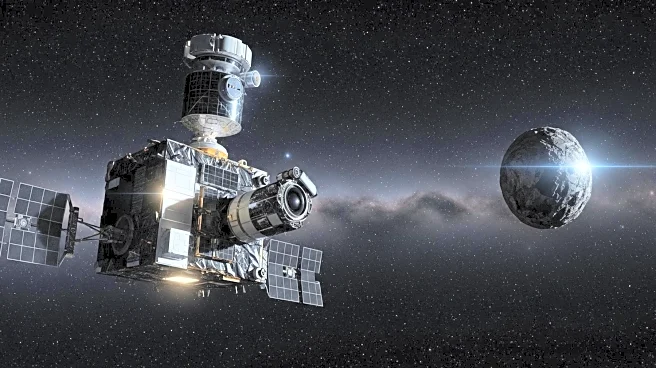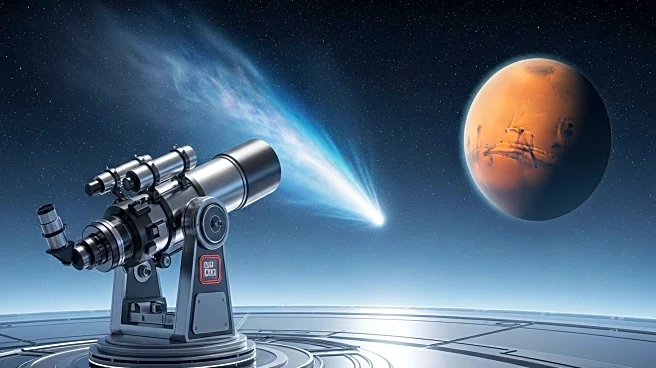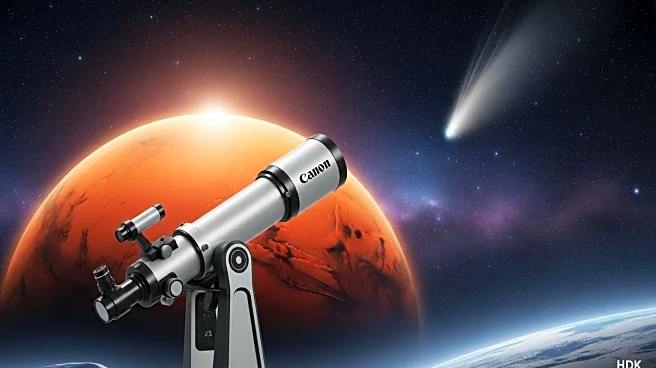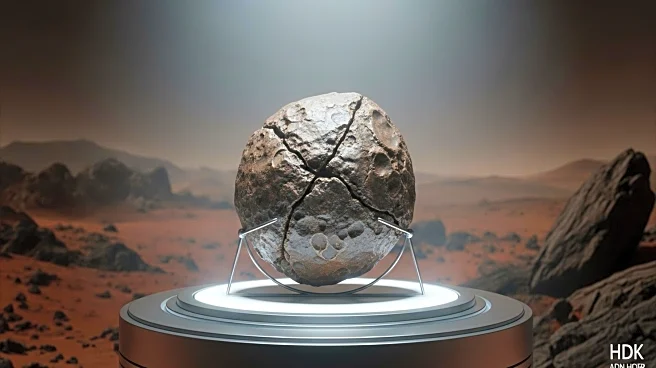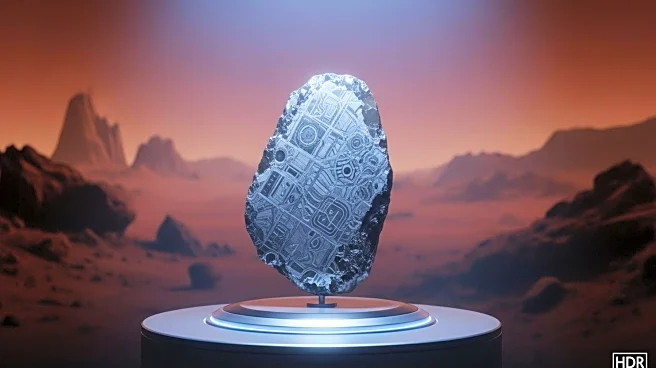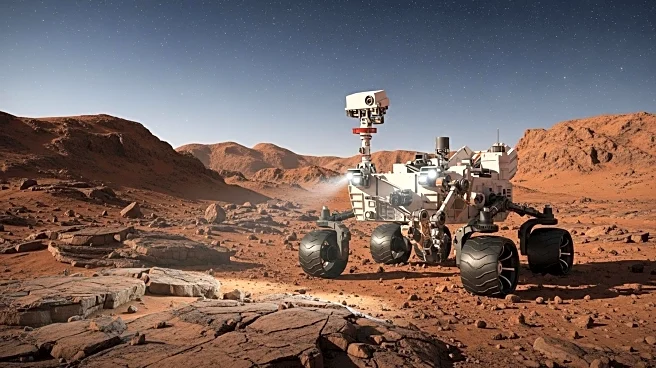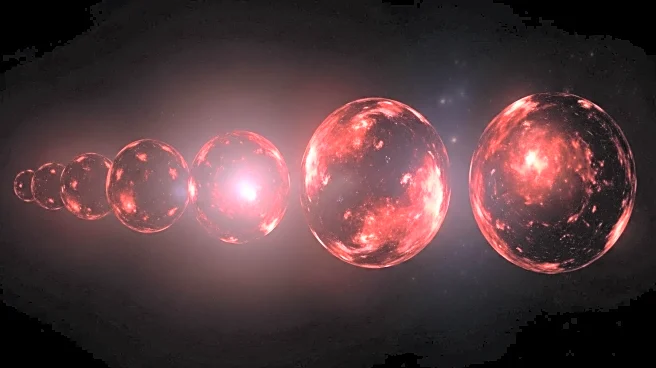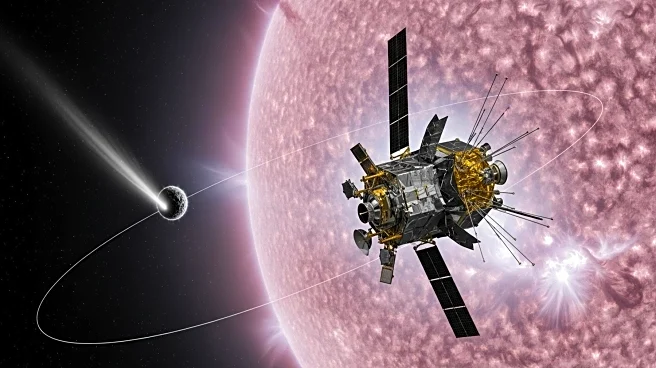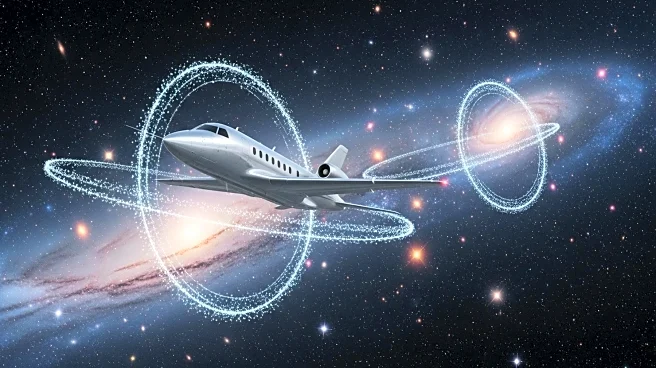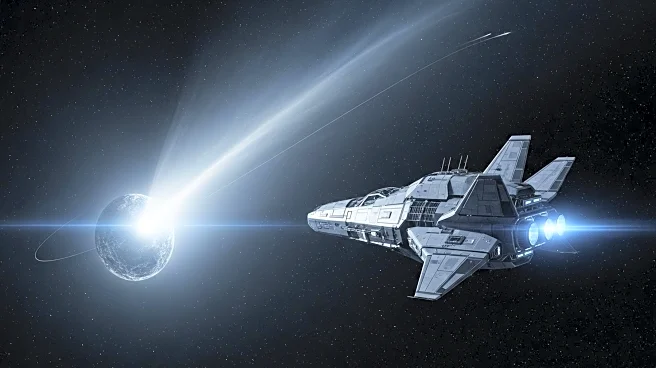What's Happening?
On October 3, 2025, the interstellar object 3I/ATLAS will pass within 29 million kilometers of Mars, providing a unique opportunity for the Mars Reconnaissance Orbiter's HiRISE camera to capture detailed images. The camera is expected to achieve a resolution of 30 kilometers per pixel, potentially distinguishing between the nucleus and the surrounding dust cloud of 3I/ATLAS. The Minimum Orbit Intersection Distance (MOID) of 3I/ATLAS from Mars is 2.7 million kilometers, indicating a precise trajectory. This close approach could allow for a precursor mini-probe to reach Mars, should 3I/ATLAS be a technological object. Calculations suggest that an orbit correction could bring 3I/ATLAS even closer to Mars, enhancing the imaging opportunity.
Why It's Important?
The imaging of 3I/ATLAS by the Mars Reconnaissance Orbiter could provide significant insights into the nature of interstellar objects. If 3I/ATLAS is a technological object, its close approach to Mars could reveal advanced capabilities in trajectory planning and maneuvering. This event could have implications for understanding the potential for extraterrestrial technology and its interaction with planetary bodies. The data collected may influence future space exploration strategies and the search for intelligent life beyond Earth. The scientific community and space agencies stand to gain valuable information that could reshape current models of interstellar phenomena.
What's Next?
Following the close approach of 3I/ATLAS, scientists will analyze the images captured by HiRISE to determine the object's characteristics. If precursor objects are detected, it could prompt further investigation into their origin and purpose. The findings may lead to new hypotheses about interstellar objects and their potential technological nature. Space agencies might consider additional missions to study similar objects, enhancing our understanding of the universe. The results could also spark discussions on the implications of extraterrestrial technology and its impact on future space exploration.
Beyond the Headlines
The potential technological nature of 3I/ATLAS raises ethical and philosophical questions about the existence of intelligent life beyond Earth. The event could challenge current perceptions of humanity's place in the universe and the possibility of encountering advanced civilizations. Long-term, this could influence cultural and scientific narratives about space exploration and the search for extraterrestrial intelligence. The implications of detecting technology from another star system may lead to new policies and international collaborations in space research.
